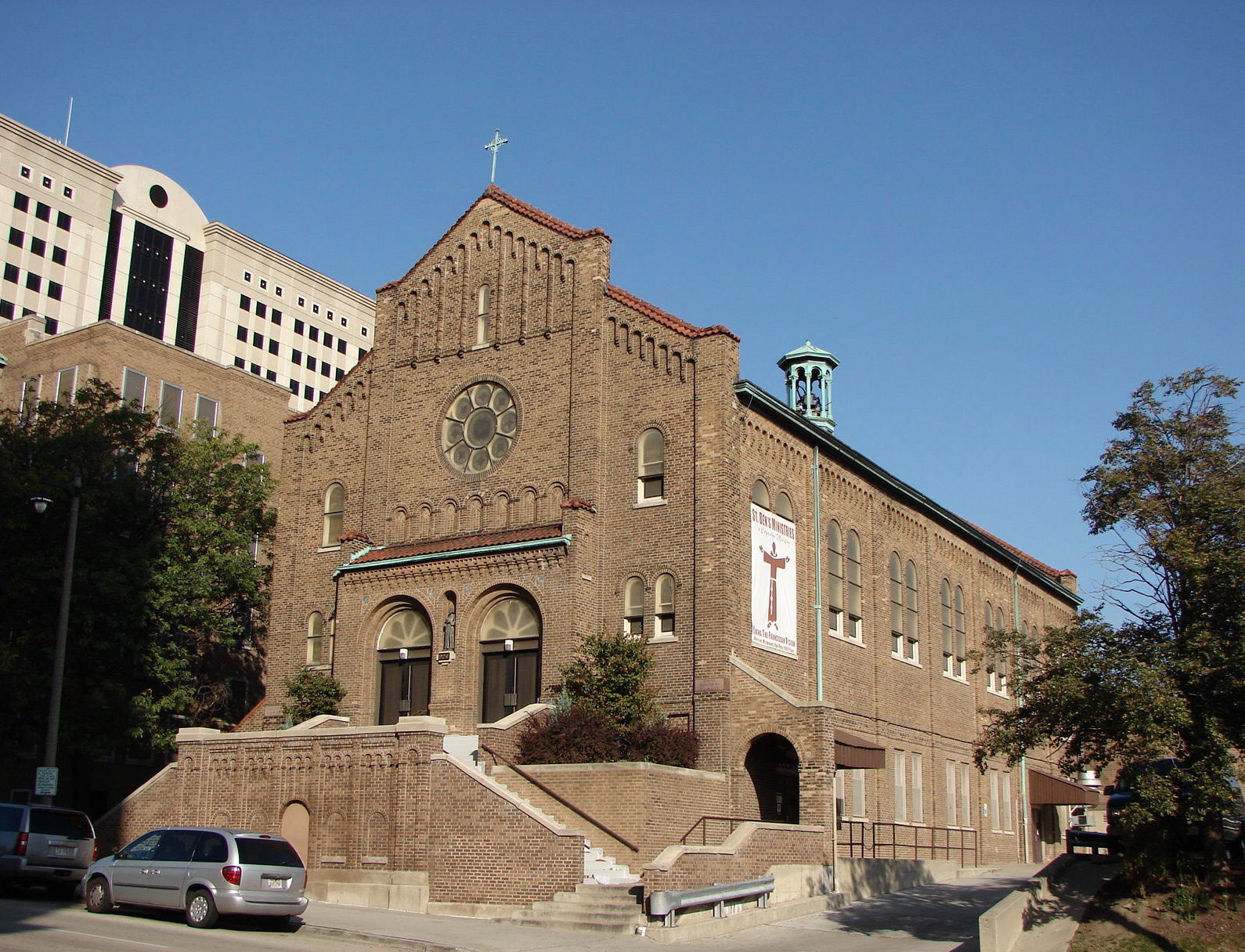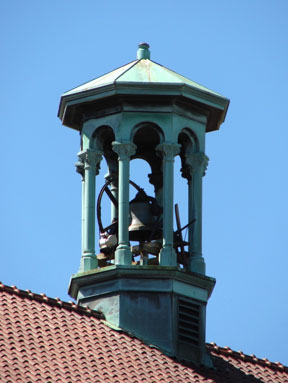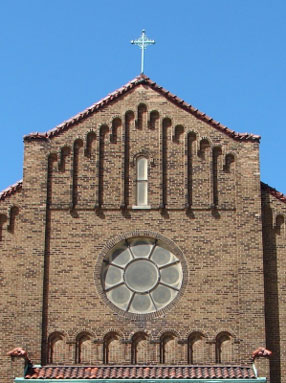21. St. Benedict the Moor Catholic, 1923
924 West State Street
Architects: Erhard Brielmaier and Sons

In 1908, the black Catholic layman Lincoln C. Valle came to Milwaukee from Chicago and held a series of public meetings to promote Catholicism among the city’s black residents. At that time, there were fewer than 1,000 black people living in Milwaukee and only a small number of these were Catholics. There were just two black religious congregations in the city in 1908: St. Mark African Methodist Episcopal (founded in 1869) and Mount Olive Baptist (founded in 1895, with the name later changed to Calvary Baptist). Valle’s efforts to recruit new members to the Catholic Church were so successful that Archbishop Sebastian Messmer approved the establishment of a Catholic mission to the city’s black community in 1909.
The mission initially rented space in commercial buildings, where a small chapel could be set up to celebrate Mass as well as holding weddings, baptisms, and other ceremonies. The mission later purchased a residence for use as a chapel until completion of the present church. Construction of the church began in 1923, with dedication of the completed building in March of the following year. Ernest G. Miller, President of the Miller Brewing Company, contributed more than $60,000 to cover the entire cost of building the church. It is the city’s oldest surviving church building originally constructed for a black congregation.
St. Benedict the Moor is one of the smallest of the city’s Romanesque Revival churches, approximately 50 feet wide by a bit more than 100 feet in length, with seating for about 400 worshippers originally. Instead of a bell tower, a small cupola on the roof houses the bell. As at some of the other smaller Catholic churches, the full width of the worship space is spanned by a vaulted ceiling, with no interior columns.
The church established a boarding school in 1913, which continued to 1954. It was the first co-educational parochial boarding school in Wisconsin. Notable alumni of the school include comedian and actor Redd Foxx, jazz musician Lionel Hampton, and former Chicago Mayor Harold Washington.
In 1932, the church founded St. Anthony’s Hospital, located adjacent to the church at the corner of State and 10th Streets. The hospital provided care to inner-city residents for more than 50 years, before closing in 1989. In its early years, the hospital also provided career opportunities for black doctors and nurses, who were not allowed to work in the city’s segregated hospitals. Today, St. Benedict the Moor maintains a strong emphasis on social service and social justice activities. The church houses a clinic for the homeless and underinsured, operates a community meal program, and provides chaplaincy services at the county jail, located just a block away.
Sources:
Avella, Steven M. “Milwaukee Catholicism – 1945-1960: Seed-Time for Change,” in Steven M. Avella, ed., Milwaukee Catholicism. Knights of Columbus, 1991.
Gurda, John. The Making of Milwaukee. Milwaukee County Historical Society, 1999.
Historic Preservation Study Report: St. Benedict the Moor Roman Catholic Church. City of Milwaukee, Department of City Development, 1997.
History of St. Benedict the Moor Catholic Colored Mission. St. Benedict the Moor Mission, 1912.

